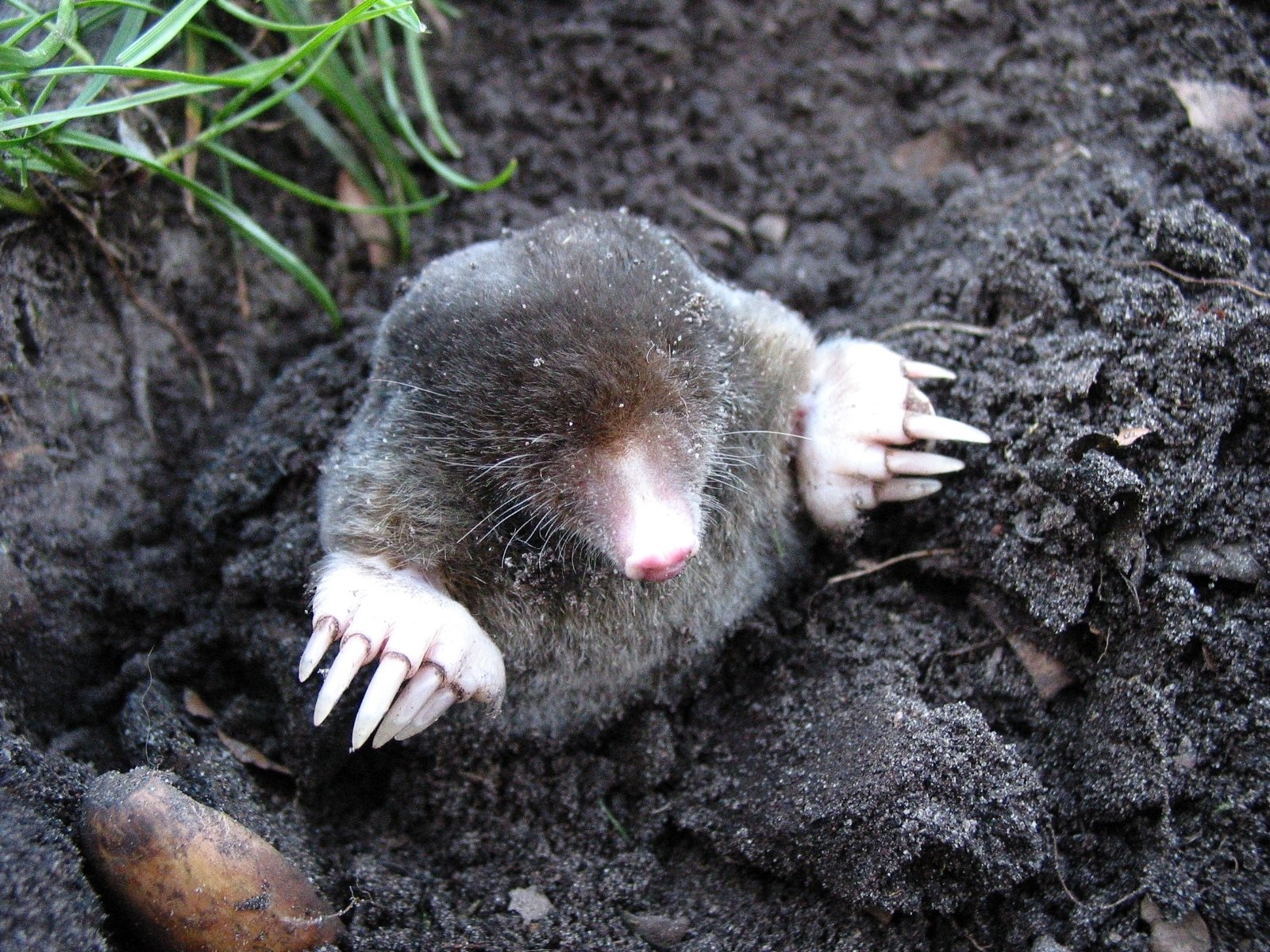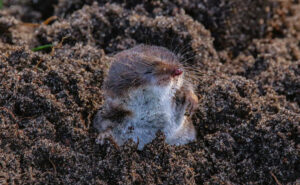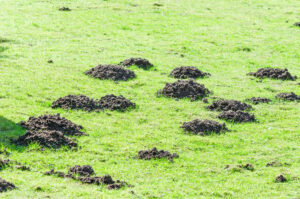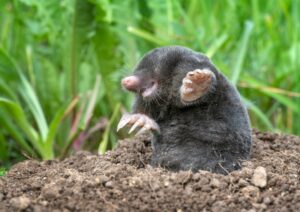
Moles are garden mammals with an average size and weight of 3.3 cm and 115 grams, respectively. They dwell in gardens, yards, and lawns, although they eat the insects and not the plants. While the presence of one ground mole in your property may not be bothersome, two or more moles may cause trouble.
Their invasion may damage your landscape, uproot your plants, and cause other adverse effects discussed in this article. Read on to know how you can identify the damage and what you can do to prevent the damages from becoming extensive.
Mole Identification
It’s essential to know a mole’s appearance not to confuse it with other pests. A ground mole resembles a mouse, although there are some slight differences between them. Here are a few traits which differentiate the mole from the other rodents:
- Tiny black eyes are hidden under the fur. You can’t easily see them
- No visible ears
- The tail is short and stubby. Some ground moles might not have the tail at all
- The feet are broad and pronounced
It’s worth noting that a ground mole feeds on insects, earthworms, and other small animals. It spends most of the time in the yard; you may never see it at home unless there is a tunnel within the home.
Mole Damage Appearance
There are many possible causes of damage to your garden’s appearance. So, how do you know that the damage is caused by ground moles? Here are the red flags that ground moles are responsible for the damage.
Mole Tunnels
Moles dig temporary surface tunnels, which they rarely use. In fact, most of the underground tunnels are never used more than once. They use those tunnels to hide from humans, adverse weather, and other animals.
There are two main types of mole tunnels: shallow and deep tunnels. The shallow tunnels are the mole runways, while the deep tunnels are the mole mounds. Too many surface and underground tunnels may damage the appearance of your garden.
Uprooted/Withered Plants
Moles detach plants when digging the tunnels. The detachment leaves the plants looking lumpy, with some partly or entirely uprooted. At times, you may never know the cause of the problem, especially if the tunnel is underground.
Don’t ignore any withered plants in your garden. Inspect the lawn to know the cause.
More Weeds
Weeds increase when the plants are uprooted. Assuming that you had used fertilizer or organic manure, the weeds will consume it because the plant is no longer there. As a result, the number of weeds in the garden will increase at a high rate.
Mole Hills
Molehills are also known as raised ridges. They form as the moles continue to dig the surface and underground tunnels. The hills can damage the beautiful look of your ground and make movement quite hard.
Where and When Mole Damage Can Occur
Moles are common in rich soil. They feed on insects and other microorganisms in the soils, and that’s why they cause damages while trying to get the contents of the underground soil. They feed throughout the year, and this means that they can invade your lawn anytime.
However, some ground moles prefer certain types of soil to others. For instance, you may find moles that prefer sandy to clay soil. Nevertheless, their presence can be unpredictable, and you may deal with them throughout the year if your soil is rich in nutrients.
Mole Damage Management
From above, it’s evident that you should not tolerate the presence of ground moles in your house.
They might uproot your plants/flowers and damage the aesthetic appeal of your lawn. They don’t cause direct impacts because they don’t feed on the crops. But the indirect effects can be immense.
So, don’t assume they won’t be harmful to you. Instead, contact the ground mole control experts to inspect your ground and mitigate them. Here are mole damage management tips to follow:
Trapping
Trapping is the easiest, safest, and most effective method for removing ground moles. Since the moles are large, they will get into the trap if you add a bait inside. You can either buy the trap from a hardware shop or create one.
Ideally, you should place the trap at the end of the tunnel where the moles use to enter and leave the tunnels.
You might need some time to determine the tunnels that the moles use most so that you know where to set the trap. Alternatively, you may seek mole trapping services to have the job done more effectively.
Repellents
There are plenty of mole repellent products. Most of the products contain garlic, castor oil, and other products that moles don’t like. These repellents may not directly kill the moles, but they may make the pests less interested in living in the yard.
Caution: There are many mole repellents in the market. Consult a ground mole control expert to help you in choosing the best.
Chemicals
There are multiple chemicals for mole mitigation. They are as useful as repellents, but they can interfere with the chemical composition of your soil.
You should only use the chemical method when you don’t have other plants on the farm. Also, you should apply chemicals under the close supervision of an expert.
A Ground Mole Removal Expert Can Help You
Dealing with pests has never been easy. If the ground mole damages are becoming too much to bear, consult a certified ground mole removal expert. The expert should provide you with the right traps and even help you in the baby ground mole control process.
Just ensure that the person you hire is well known and experienced to accomplish the task within the shortest period.
Trapyourmoles.com is a reputable wildlife removal service firm. We offer both commercial and residential mole trapping services at affordable prices.
We are certified, and our team is well-versed with all types of ground moles, squirrels, chipmunks, groundhogs, and other animals. Don’t let the animals damage your yard. Request an appointment today to get the help you need.







No comment yet, add your voice below!